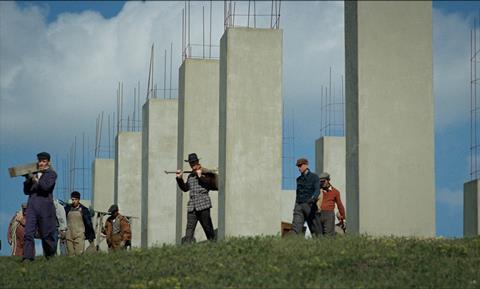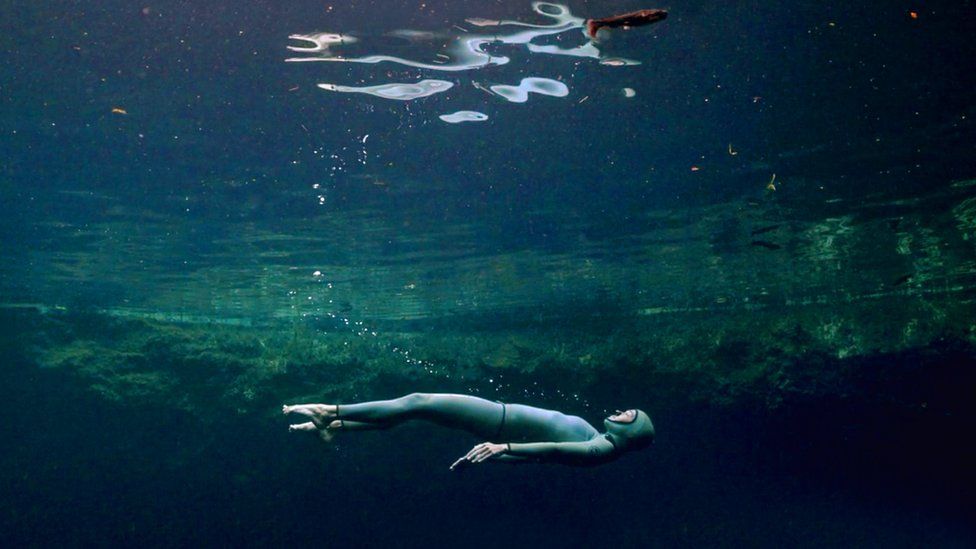
Diving is a form of meditation. For those who have spent time underwater, there is no need to explain the calm that it brings. The distortion of sound, the absence of the usual constraints gravity places on movement, the rhythmic push and pull of the water, and the variations in light all make the underwater world a place in which we can distill that corner of ourselves that is still—despite everything—capable of awe.
Laura McGann’s documentary The Deepest Breath captures these elements as best as any film can to attempt to convey them to those who have never had the privilege of diving. The wide-angle shots of freedivers—with arresting cinematography as they slice through the water to accomplish super-human feats—illustrate both the primal beauty as well as the terror of exploring the ocean in this way. Against the melodic soundtrack by Nainita Desai, one can almost feel the embrace of the water as the notes drop away into the abyss. The vastness of the blue around these lone freedivers is breathtaking.
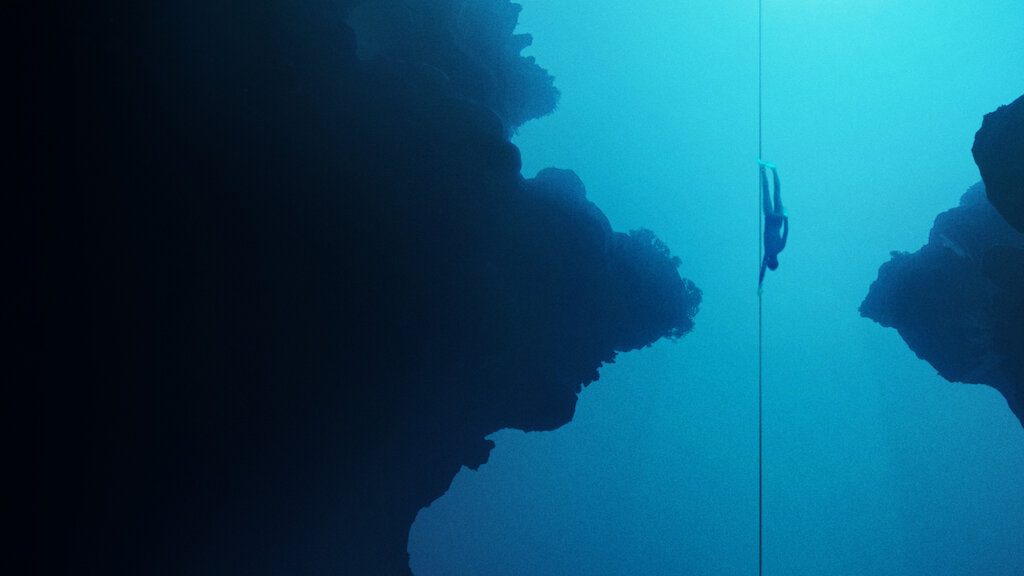
The film centers around two main figures, cutting between their stories before their lives intersect by building out their biographies through a mixture of interviews and family and personal photos and videos. The first of these figures is world-renowned freediving champion Alessia Zecchini. The second is beloved top safety diver Stephen Keenan.
Keenan, a hero in the documentary’s narrative, at one point describes diving as extremely psychological. As a diver myself (albeit scuba, though the principle remains the same), I couldn’t agree more. Slipping beneath the water means renouncing recourse to the usual means of existing as a human. Everything slows down; your control of your movements becomes subject to new forces, and your control of the environment around you is virtually non-existent. You learn to act and react methodically. You learn to breathe carefully and intentionally. You learn to focus on the most basic signals to ensure your survival. The Deepest Breath depicts just how alone you are when beneath the surface, even if others are around you. In the underwater world, you retreat into your own mind, and you must either become prisoner or master of it.

There is something that is at once alluring about the open water and also inherently repellent to us as humans. Water holds a power that we envy, even as we recognize that it is far too great for us to control. Because of this, the depths beckon us with their beauty and mystery, yet they also terrify us. Perhaps this is why the idea of the siren and her song—wafting into our ears over the sound of the waves—continues to pattern our stories and imagery of the sea. Here in the film, freedivers wend their way through the water with monofins, like mermaids. In their harmonization with the sea, they become something beyond human, almost mythical.
In a way, this seems to be just what Zecchini is searching for. She yearns to be the best freediver in the world, to match and surpass her idol, Russian freediver Natalia Molchanova. Even as a child she knew “vorrei diventare un’apneista famosa” (“I want to become a famous freediver”): she is seeking not just the satisfaction of being great in her field, but also notoriety, recognition, the status of a legend.
Keenan, for his part, is depicted as having spent much of his life searching. Unlike Zecchini’s pursuit of a specific, measurable (meter by meter) goal, Keenan’s search doesn’t have a defined final destination—but he seemed determined to enjoy the journey. Through video footage Keenan recorded of his travels through Africa as a young man, he is presented as a jovial, curious, adventurous, and courageous person with a zest for living life to the fullest.
While he is shown having moments where he questioned what the purpose of this journey was, his drive to scale mountains and trek deep into the underbellies of jungles reflect that he, too, wanted from his life something that transcends, something extraordinary. As his father says, Keenan was someone who sought to “drink up every last drop of the world.” After years of wandering, Keenan finally encountered freediving. When he then paired it with safety diving, he put himself in a position to do extraordinary things, to perform acts of heroism that could be the stuff of legends—and he did.
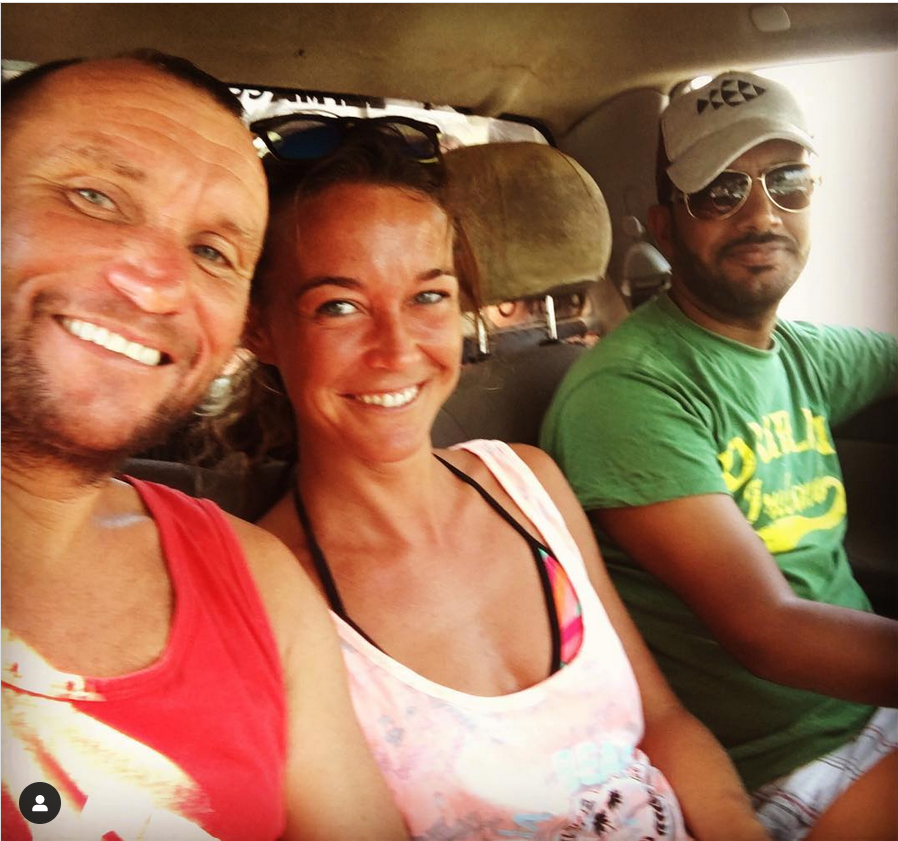
The film’s insistence on retracing the steps Zecchini took to earn her place among the world’s greatest freedivers underscores the dedication and training it has taken, but it also tragically reveals just how much she—and others—must sacrifice in pursuit of her dream. It is because Zecchini aspires to not only achieve what Molchanova has achieved but to go even further that she decides to take on the deadly challenge of the Blue Hole in Dahab, Egypt. This aspiration costs the life of a man who was one of the world’s foremost safety divers, a dear friend to people from around the globe, and quite possibly the love of Zecchini’s life.
Was it worth it?
This isn’t a question the film really seems intent on asking, and for good reason. This is a story about dreams. Our first introduction to Zecchini is through the words of a childhood essay where she asks, “Ti capita di pensare che il mondo intorno a te—i compagni, gli amici, i genitori—non capiscano i tuoi sogni?” (Do you ever think that the people around you—your classmates, your friends, your parents—don’t understand your dreams?”). Chasing dreams is the purpose of both her and Keenan’s stories.
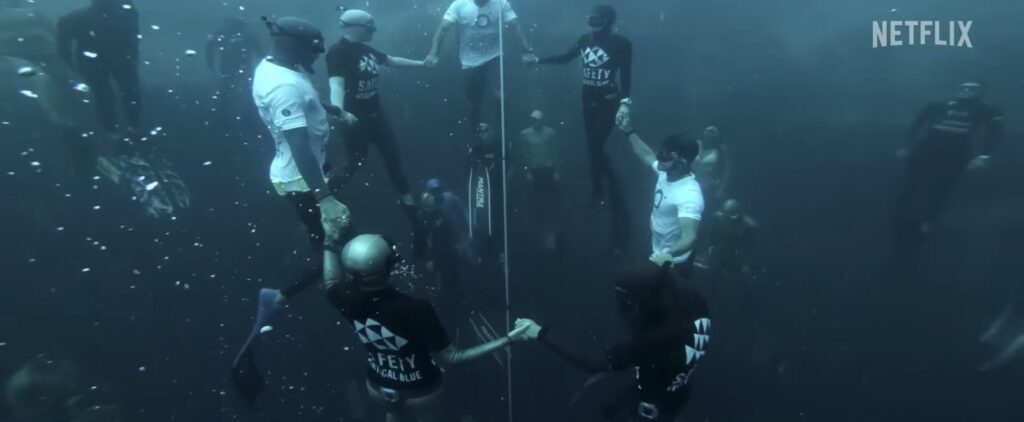
Up to this point, so much has been done to demonstrate that Keenan’s dream was to live a life that meant something to him, even if he wasn’t always certain what that meaning would be or how to reach it. In so doing, he lived a life that came to mean a great deal to a great number of other people. When he met and fell in love with Zecchini, that meaning became clear to him. We know this because his final act was saving her life. Keenan allowed her to survive what would have otherwise been a fatal dive so that she could go on to live her dream of being the greatest freediver in the world.
His dream was realized.
And because of that, Zecchini’s has been, too. Since Keenan’s death in 2017, Zecchini has gone on to break more records and win more gold medals. She is widely regarded as among the best freedivers of all time—and she is, at the time of writing, only 31 years old. As The Deepest Breath notes at its close, she dedicates all of her victories—each transcending the boundaries of what was believed to be the limits of the possible—to Keenan.
If that isn’t extraordinary, I don’t know what is.
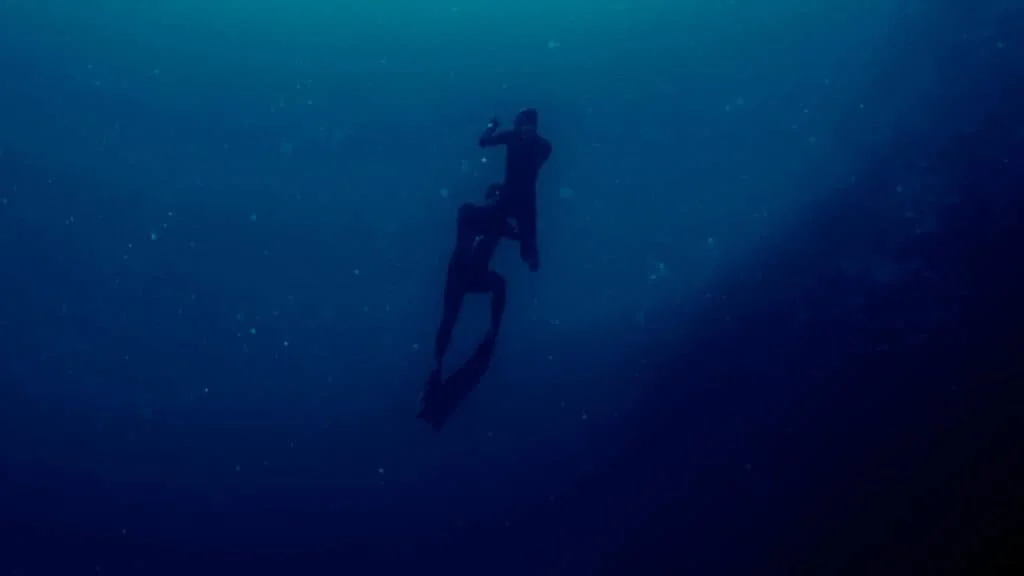
Copyright © 2022 My Sunset by Bogdan Bendziukov.


